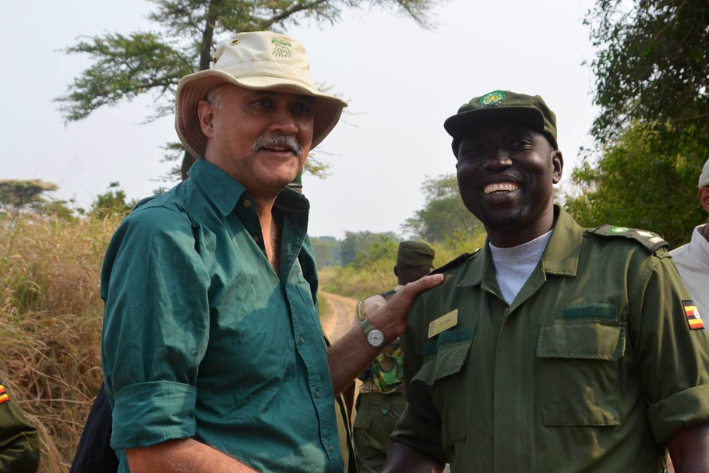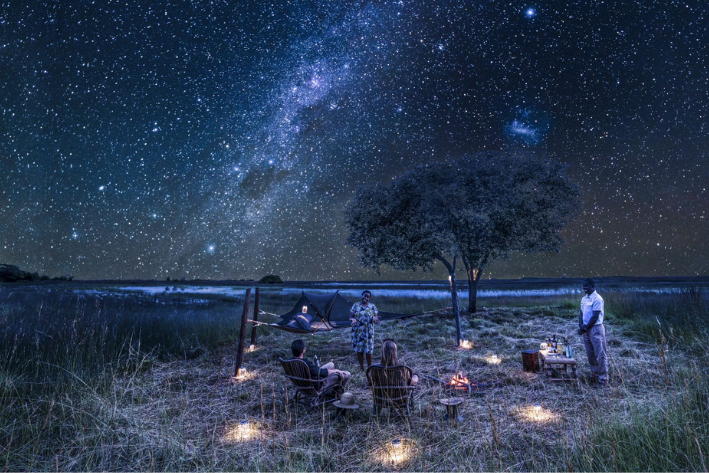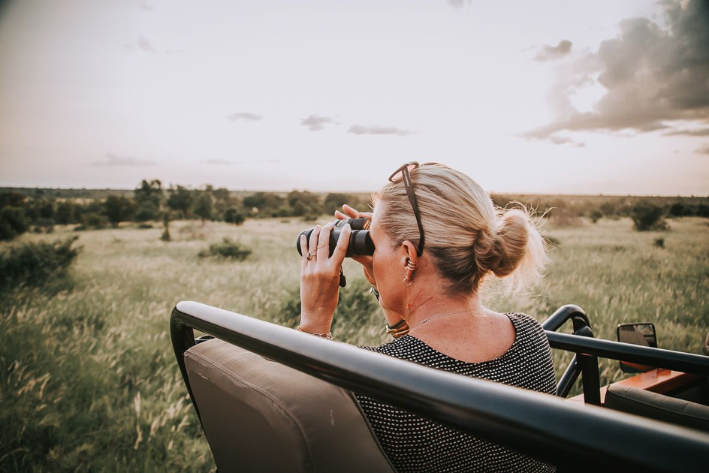We meet Patrick Woodhead
The Explorer behind the only Luxury Camps in Antarctica
In the latest piece in our “Introducing” series, we chat to White Desert’s pioneering founder Patrick Woodhead, and learn about the incredible mind that created a luxury safari experience in what is arguably the most desolate and unforgiving place on earth.
With three different camps in Antarctica, the latest of which is due to open in December 2022, as well as the infrastructure that makes it possible to do all their own logistics, White Desert is a wonder, the type of operation very few people would think possible, let alone have the ability to execute.
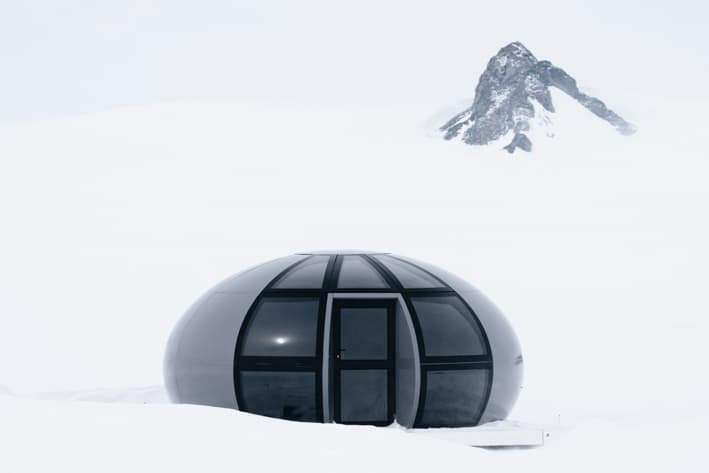
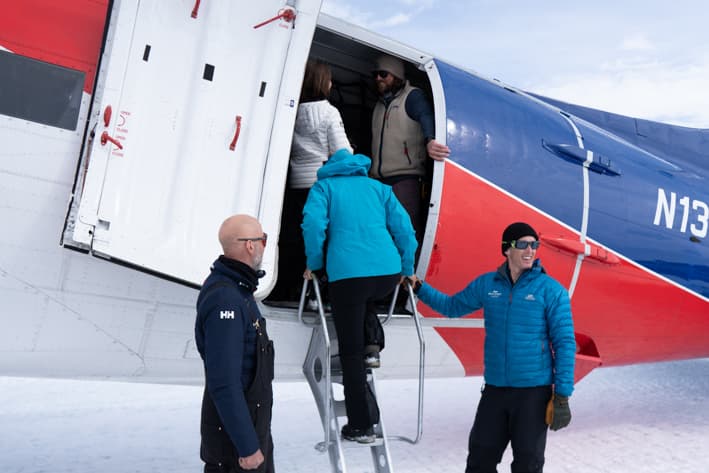
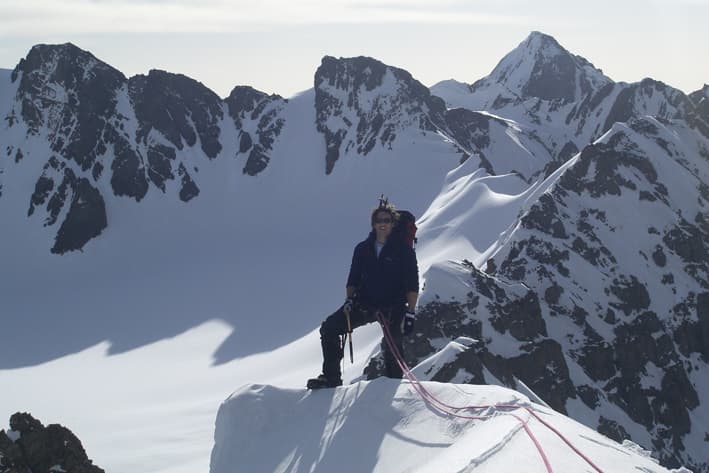
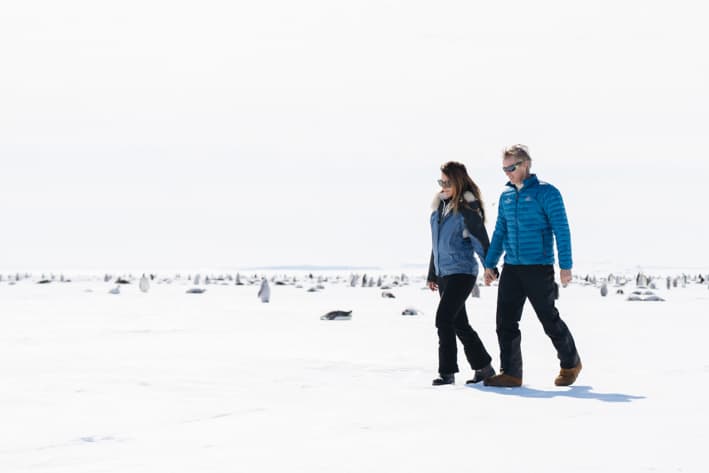
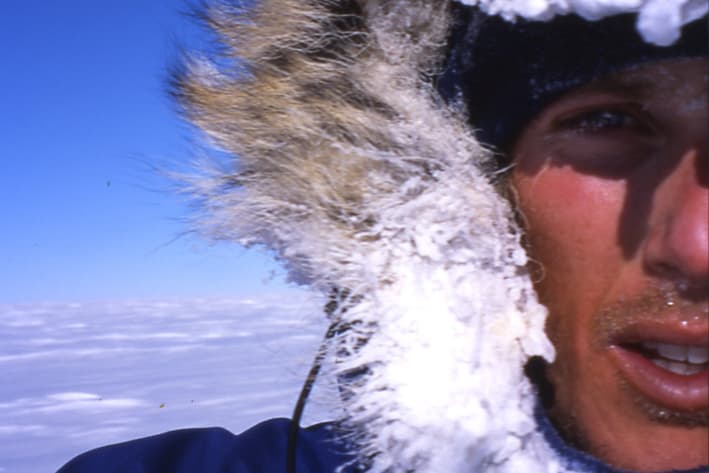
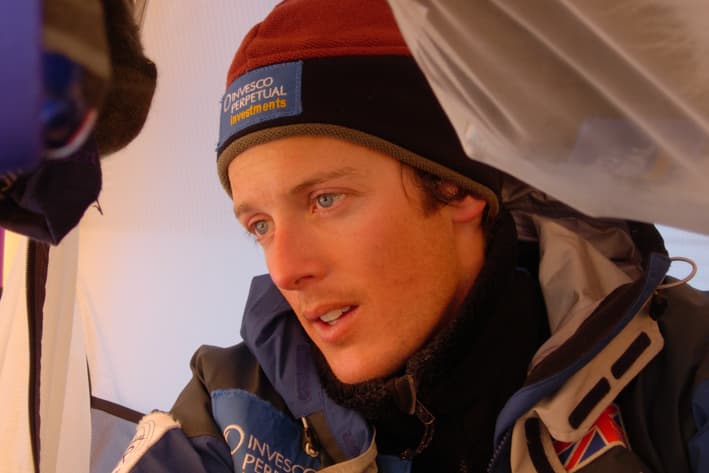
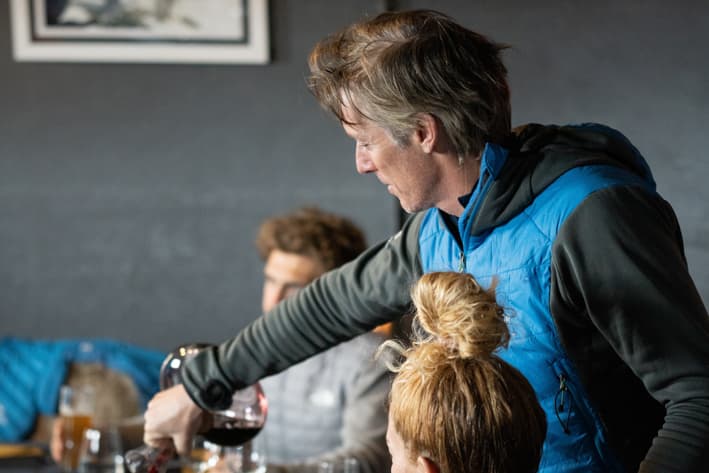
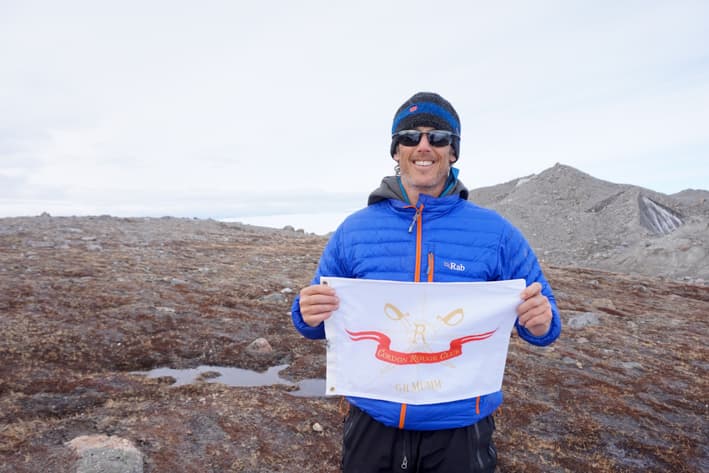
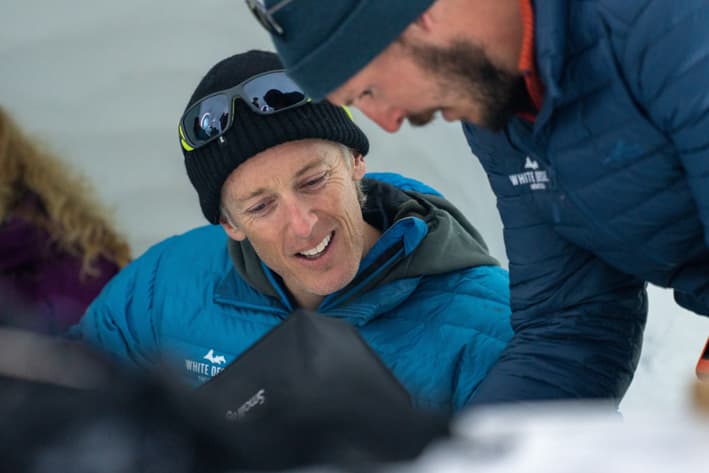
The beginnings of a true pioneer
The man behind this marvel sits across virtually, animated and full of life despite the chilly Winter morning. When asked what led him down this path, Patrick smiles fondly.
“Where do I start? I guess the inception of the whole of White Desert was a single moment when we were doing a traverse of the whole continent of Antarctica.
“I spent about 10 years doing expeditions to completely unmatched places. There were unclimbed mountains in Kyrgyzstan or rivers in the Amazon. And then inevitably we got focused on Antarctica because there’s so much in Antarctica that never been done before. So after skiing to the South Pole in 2002, I went back and did a traverse of the whole continent of Antarctica. Only 11 people had ever done that before, more people had stood on the moon.”
He looks wistful, transported back in time.
“It was a really long expedition, 2000 kilometers across the interior and while it was very tough and there were lots of elements of hardship as you’d expect, the other sort of abiding thoughts I had was that no one comes in to see the interior of Antarctica.
“They do the cruise ships, they go on the coast, on the peninsula, they see the icebergs and the whales and the Marine life, but what about the interior? It’s only a few polar explorers and some scientists get to see this extraordinary place, the deep field.
“And in that moment,” he says, his tone thoughtful, “ I very much referenced to African safaris because there you’ve got these luxury safari lodges that are built in highly remote wilderness areas. They’re done sensitively, they’re done responsibly, they’re done in tune with nature. And they give these tourists an extraordinary insight into what the wilderness is like.
“So using that sort of format and that focus, we thought, well, all the money is in the logistics. It’s really hard to fly here and it’s really expensive to fly here. So what’s the difference between providing someone with a tent or a nice round fiberglass pod? We can do this in luxury instead of having to be a hardened polar explorer, and so could we just take normal people into the interior of Antarctica so they can see this?
“That really was very much the start of White Desert 17 years ago. It was very authentic and still has that heritage. But over the 17 years, we’ve grown into something a lot more sophisticated where we’ve taken control of our own logistics and we have multiple camps. It’s organically grown into something which employs a hundred people from 17 different nationalities, and it’s quite a major operation down in Antarctica now.”
We ask Patrick where his desire to explore these untouched places came from.
“When I was about 17, I was at a talk at the Royal Geographical Society by Sir Ran Fiennes. He talked about doing these expeditions. He did a polar traverse as well, he’s one of the few people who have traversed the whole continent, and my biding emotion during that talk was one of jealousy. Why should he have this extraordinary life?
“Maybe I was going to be destined to go be an accountant. Who knows?” Patrick laughs wryly.
“I left university after doing an arts degree in philosophy and ancient history and was quite clueless as to what I wanted to do. And then we just started moving off into climbing expeditions in these far flung places. It ended up being an 8 to 10 year period of doing expeditions. We had no money. We always had to raise money from sponsors or writing books or press articles. We could just raise enough money to do the expedition to Tibet. Then we’d come back penniless and off we went again.
“It didn’t matter what it was. It was just going to unmapped places, places with no relief. And that was the exciting bit of being the first to stand on an unclimbed mountain. That was the goal. It wasn’t always climbing the north face of Everest, it was just about going somewhere new. That was the exciting part.”
Patrick goes on to tell the details of his 2004 Antarctic traverse, how they managed to cross the continent of 2000km in about 80 days, and of the many close calls he’s had over the years. He still has all this fingers and toes despite the very real threat of frostbite, although many of his explorer friends have not been so lucky.
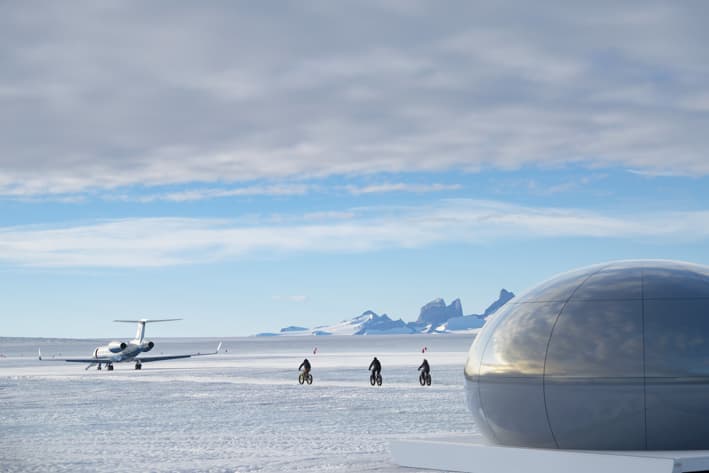
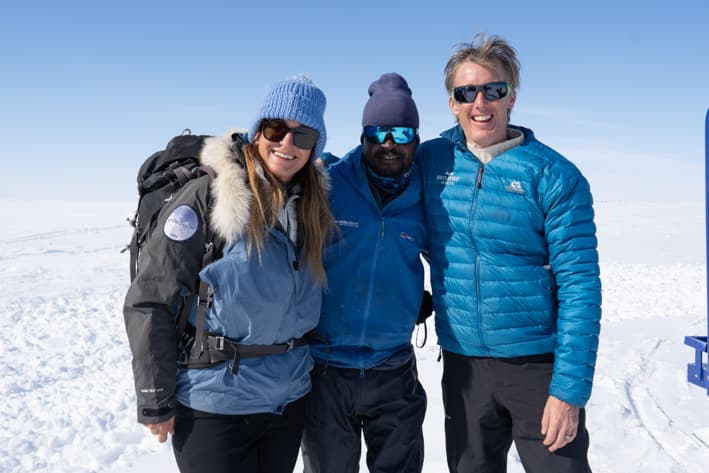
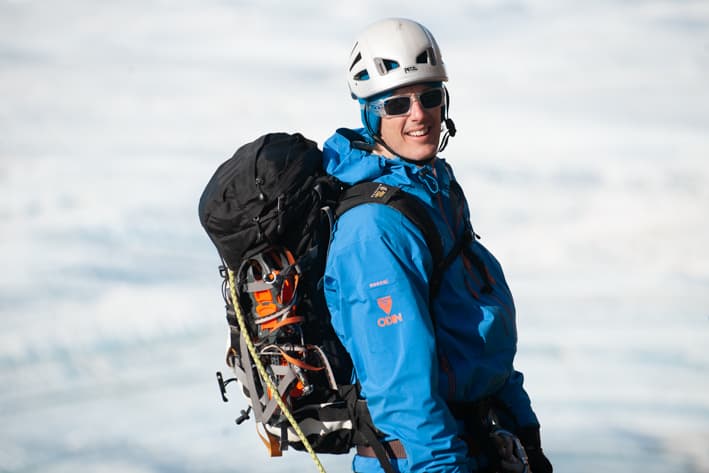
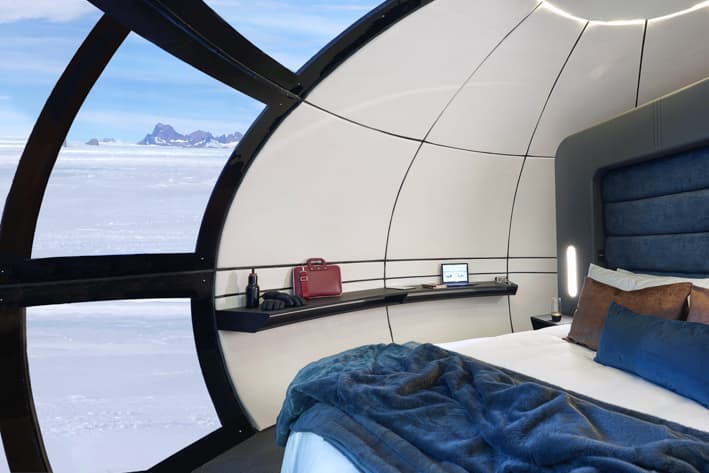
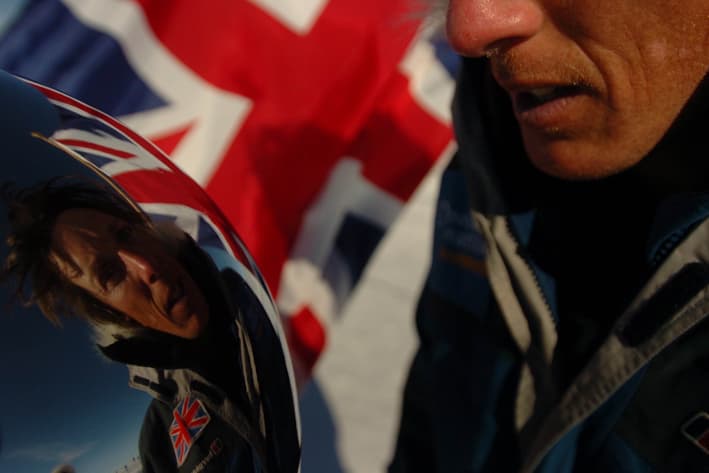
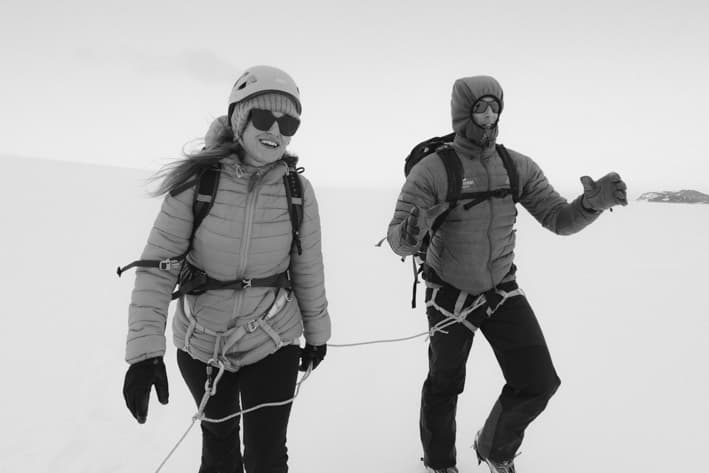
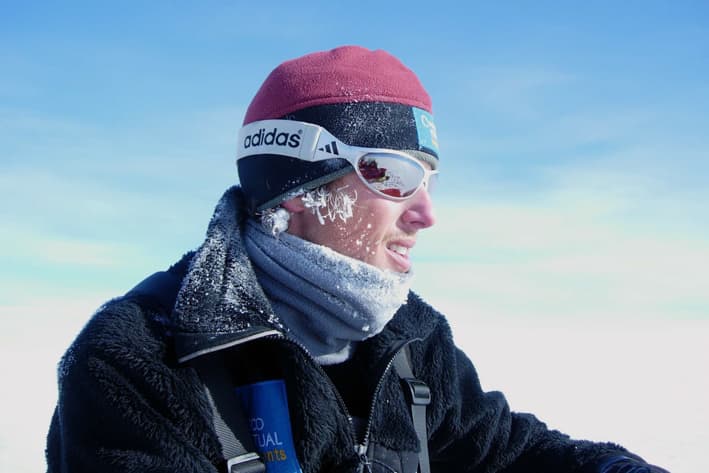
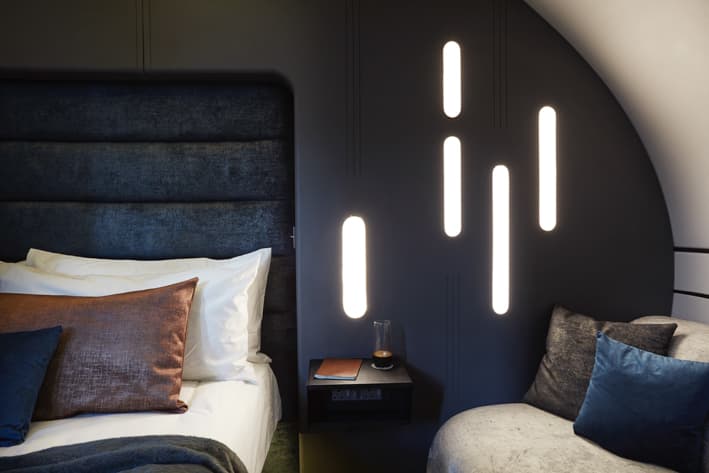
The start of something incredible
When we ask about the early days of White Desert, Patrick goes on to explain:
“So my wife and I founded White Desert 17 years ago and it started off with just very small tents. We used a company coming out of Cape Town already who was flying in scientists. We would just take a couple of seats on the back of the plane and bring in a couple of guests and have some tents. Then over the years, we started to think that we could do the logistics ourselves.
“Instead of using a cargo plane, we could use a very modern aircraft. We now use the G550 which is super, super modern. It’s got the range to fly there and back, so it’s very safe in case the weather changes. It’s a $30 million asset that’s full of technology that keeps you safe. And last season we brought in something called an Airbus A340. We’ve changed a few of the rules of how you’re getting into Antarctica. And I think for the better and for the safer.”
Patrick had hinted at a lot of expansion at White Desert, most notably the opening of a brand new camp. We asked him if there were plans for expansion into any other parts of Antarctica. He looks thoughtful for a moment and then responds:
“The expansion phase that we’ve gone through is to consolidate all our planes and logistics. Each year, we take 150 scientists to their bases and about 250 tourists to the interior. The Echo Base is a new facility that in the process of opening up. And what is really exciting about Echo is that the whole design is much more futuristic.
“Most people think of Scott and Shackleton and leather and brass and the old safari canvas sort of style when they think of Antarctica. And one of our camps harks back to that, but this new camp is very much inspired by the astronauts that have been with us. We had Buz Aldrin come with us in Antarctica. Then we had Terry Virts, who was the commander of the International Space Station. And in fact, all camps on the way to the South Pole are so remote that your nearest neighbor is the International Space Station, circling 400 kilometers above your head.
“There’s a whole astronaut kind of vibe. It does look lunar. It looks surreal and weird and unlike anything else on earth. So having these pods that are all connected, like some sort of Martian base or lunar complex, makes perfect sense.
“I was nuts about Star Wars when I was a kid, as most kids were. Lots of the interior has echoes of that, the Star Wars, Millennium Falcon kind of interior. It’s a 1970s vision of what they thought the future is going to be like back in the seventies. I love that style.
“I love that look and that functionality. These cutting-edge bespoke pods are extraordinary. In like 80 knots of wind, you can barely hear the wind outside. They’ve been amazingly designed with these huge windows, so you can lie in bed and it feels like you’re outside the pod, and then they’re all connected up and it just echoes the whole new evolution of what we’re doing! I’m really excited about that.”
Listening to Patrick speak, it’s clear to see how much this project means to him, and how passionate he is about sharing this incredible space with others. White Desert as a whole so clearly echoes his incredible desire to explore, to do things no one else has tried before. Instead of navigating untraversed parts of the globe, he’s evolved into opening up one of the most remote places on earth to regular people, using equipment and technology quite unlike anything else to successfully create an experience no one has ever even attempted.
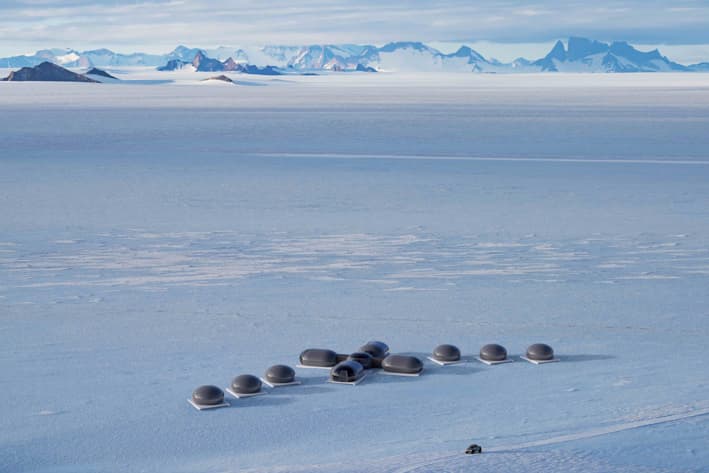

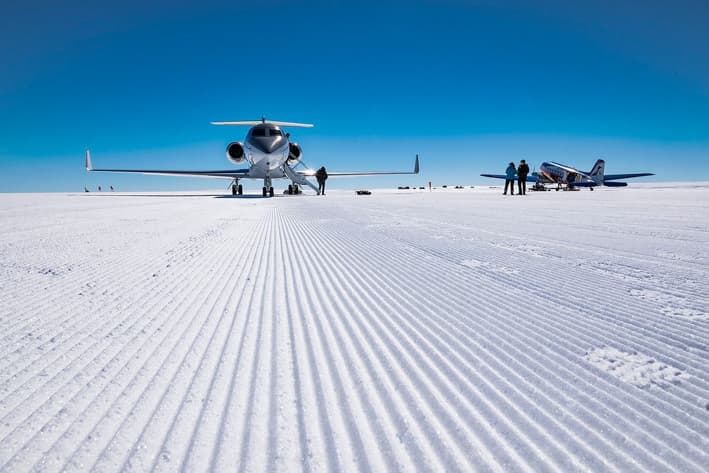
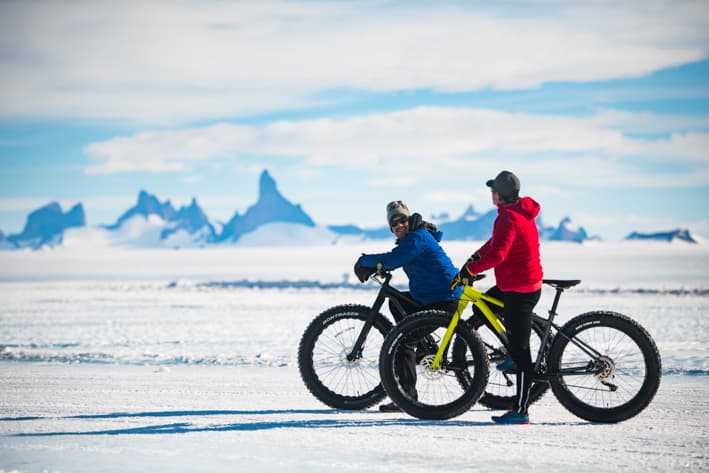
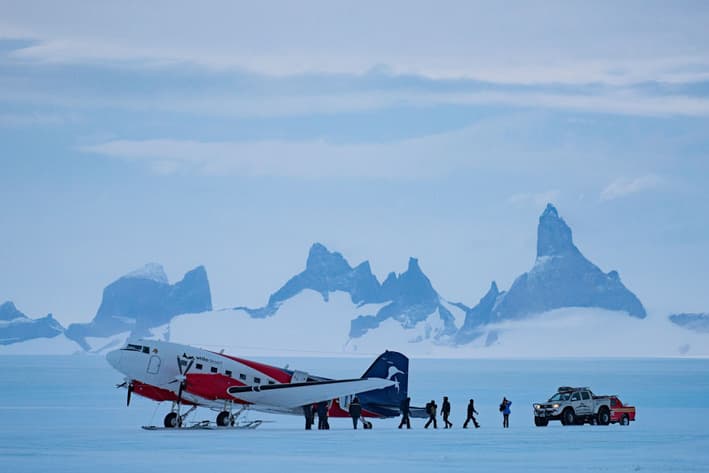
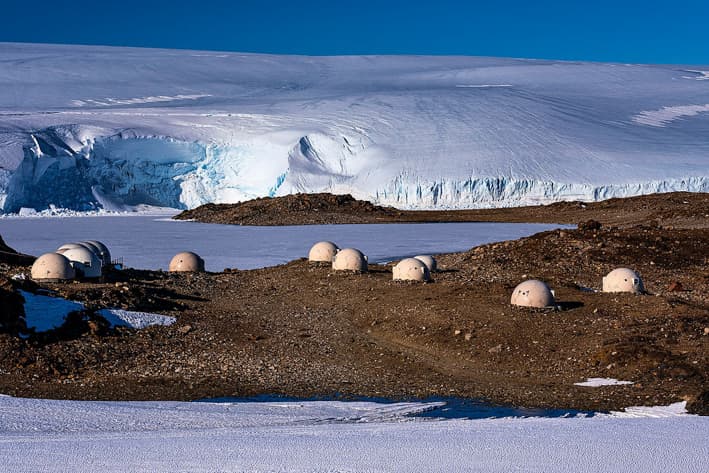
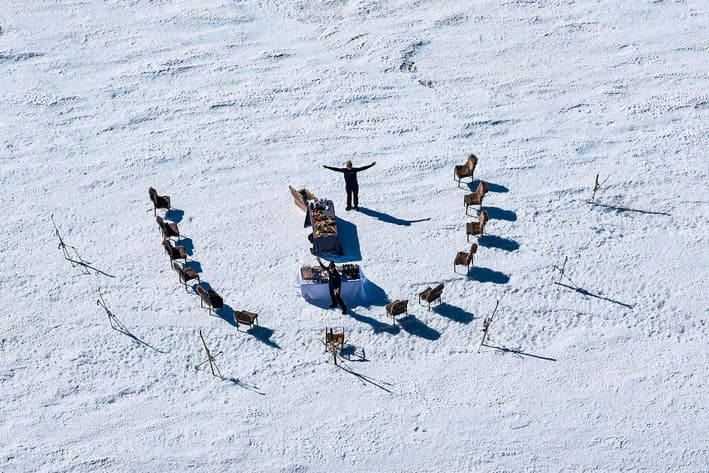
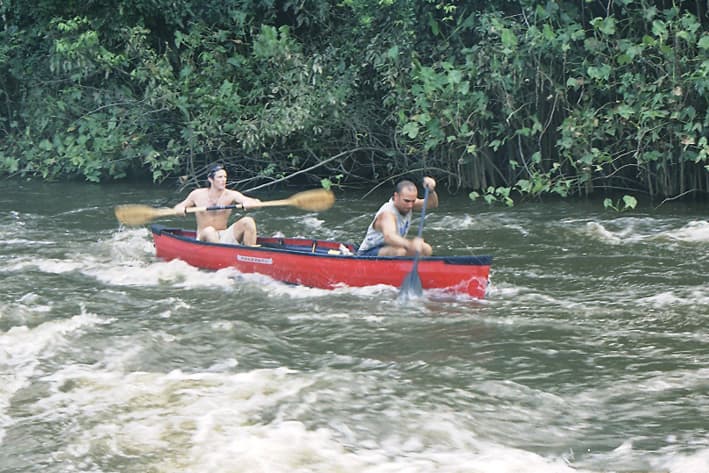
Conservation at the edge of the world
As our interview draws to a close, we ask him about the conservation aspect of White Desert, and how such a large operation manages to keep their footprint on the environment so small.
“The environmental side of things is incredibly important to where we are. It’s a wilderness, and we’ve recognized that from day one,” Patrick says.
“We believe that if you keep the group size small, you can do it responsibly. Each group is only 12 people, and we’re taking in lots of rich CEO’s and royal families and interesting people into Antarctica. By going there, they experience it. It’s tangible, and they can become ambassadors for that. That’s a big part of why we think that tourism is genuinely a force for good.
“The second part is using our logistics to get scientists to their research stations,” he goes on.
“Then in terms of all the camps that we’ve built, they have no foundation, so they can be dismantled. We also have very strict environmental protocols that we have to adhere to about how we take rubbish out of Antarctica, how we can leave no trace. That’s all really important to how we operate and manage our operations.
“But,” Patrick says thoughtfully. We can tell he’s getting to something big.
“The one thing we couldn’t affect was flying planes. Whatever we did, we were still burning jet A1 fuel. So since 2007, quite a long time before it was popular, we’d been carbon neutral and offset everything. And as technology has evolved, we’ve brought in a sustainable aviation fuel.
“It reduces your soot which is really important in Antarctica because the black soot that comes out of the plane stays on the snow, and then obviously exacerbates the melting effect of the sun. So this is something we’re really excited about, and we’re the first people to use it in Antarctica. We did a test phase last season, and we’re going in heavy this season. Our goal is to have a three-year period to replace all our fuel in Antarctica, which will have a really sizable effect as on our carbon output and our soot output.
That’s the direction I think operators in Antarctica would be headed. And it’s exciting to think that tourism can have an impact. It’s a responsible way to travel.”
Patrick goes on to tell us about some of the projects he and White Desert have been involved in recently. It’s so clear to see how invested in this project he is, how proud he is of the work his team is doing. We’ve planned trips for our clients to White Desert before, and marvel at the shear impossibility of it all every time we do, yet listening to its creator puts things into perspective.
Patrick is one of that rare breed who not only has a deep respect and love for our incredible planet, but has the ability to channel that appreciation into something truly groundbreaking. Because of him, more people than ever before have been able to see this otherworldly Antarctic interior that would only have been accessible to a few scientists, explorers, and through the pages of books or TV shows.
People like Patrick and all the other individuals we have interviewed so far make us confident in this incredible planet, confident that not only are there people who appreciate it, but people who have the determination, grit and unerring vision to see it respected and taken care of. White Desert is truly a testament to that.

